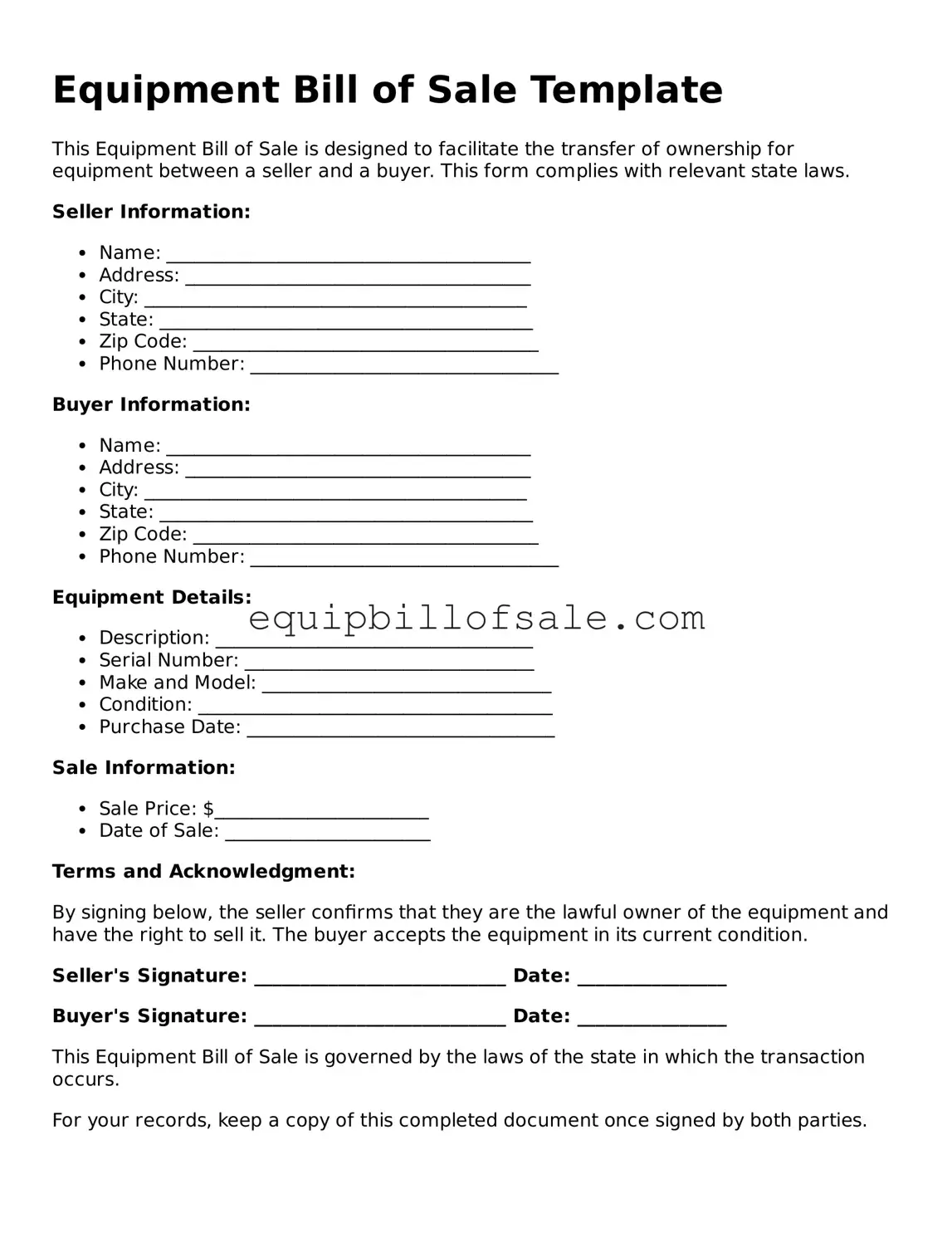Documents used along the form
When completing a transaction involving equipment, several additional forms and documents may be necessary to ensure a smooth process. Each document serves a specific purpose, providing clarity and legal protection for both the buyer and the seller. Below is a list of commonly used documents that accompany an Equipment Bill of Sale.
- Equipment Purchase Agreement: This contract outlines the terms and conditions of the sale, including the price, payment method, and delivery details. It serves as a comprehensive guide for both parties.
- Warranty Document: If the equipment comes with a warranty, this document details the coverage, duration, and conditions under which repairs or replacements will be made.
- Inspection Certificate: An inspection certificate verifies that the equipment meets certain standards and is in good working condition. This document can protect the buyer from purchasing faulty equipment.
- Title Transfer Document: For equipment that requires a title, this document facilitates the transfer of ownership from the seller to the buyer, ensuring that the buyer has legal rights to the equipment.
- Proof of Payment: This receipt or invoice confirms that the buyer has made the payment. It serves as evidence of the transaction and can be important for future reference.
- Non-Disclosure Agreement (NDA): If sensitive information is shared during the sale, an NDA can protect the confidentiality of proprietary information between the parties.
- Delivery Receipt: This document acknowledges that the equipment has been delivered to the buyer. It provides proof of delivery and can be used in case of disputes regarding the transaction.
- Vehicle Release of Liability: This form is essential for vehicle owners to clarify their non-responsibility for any incidents post-transfer. You can find a suitable template for this document at Legal PDF Documents.
- Sales Tax Document: Depending on the jurisdiction, this document may be necessary to confirm that sales tax has been collected and remitted for the transaction.
- Return Policy Agreement: If applicable, this document outlines the terms under which the buyer can return the equipment, including time frames and conditions for returns.
Using these documents in conjunction with the Equipment Bill of Sale can help ensure a clear and legally sound transaction. Each form plays a vital role in protecting the interests of both parties involved in the sale.
